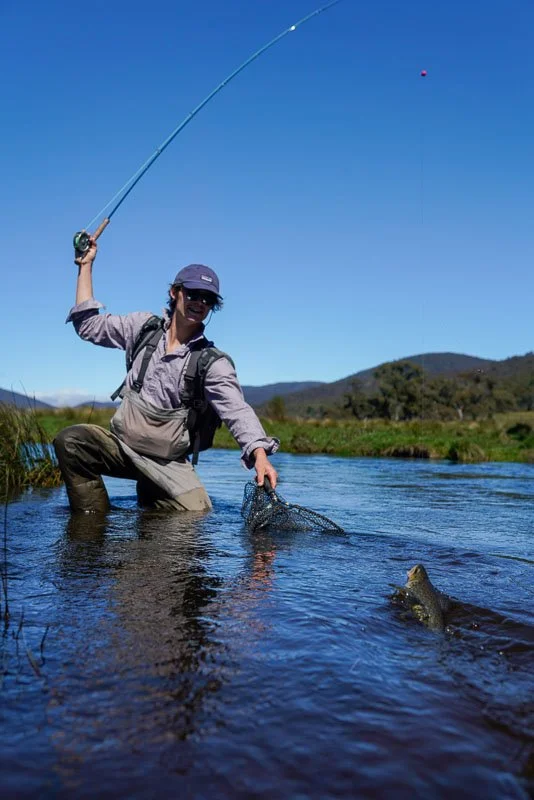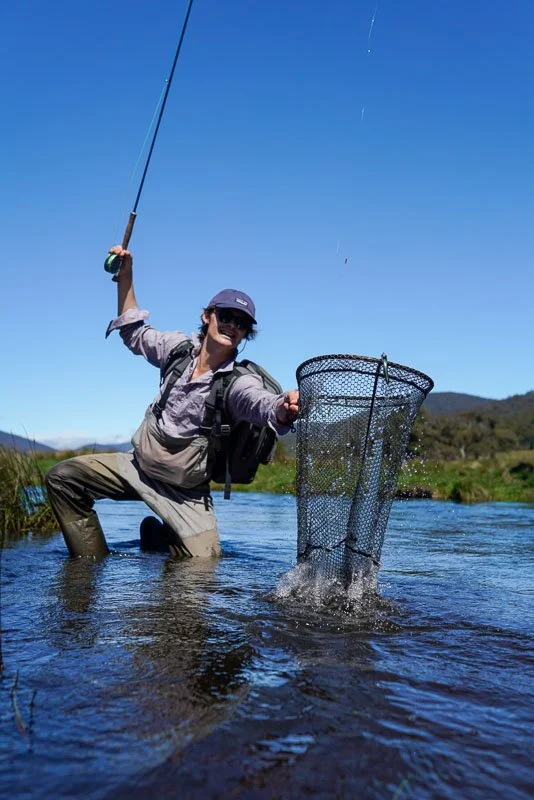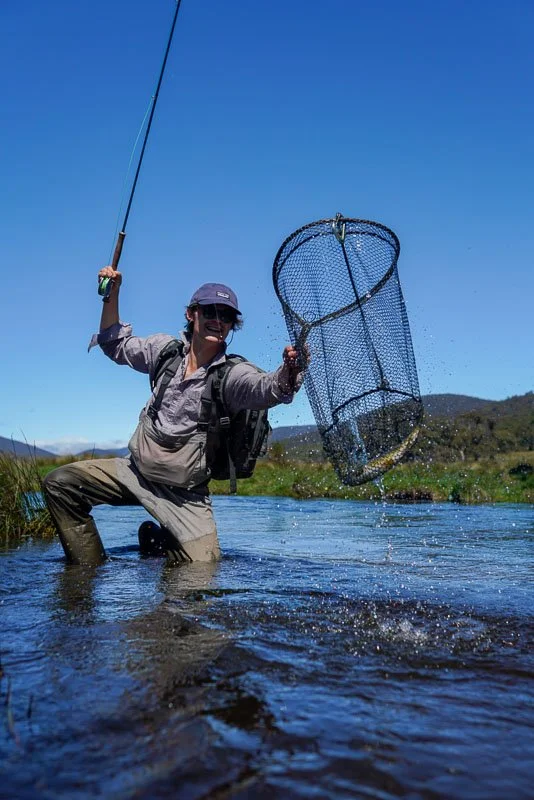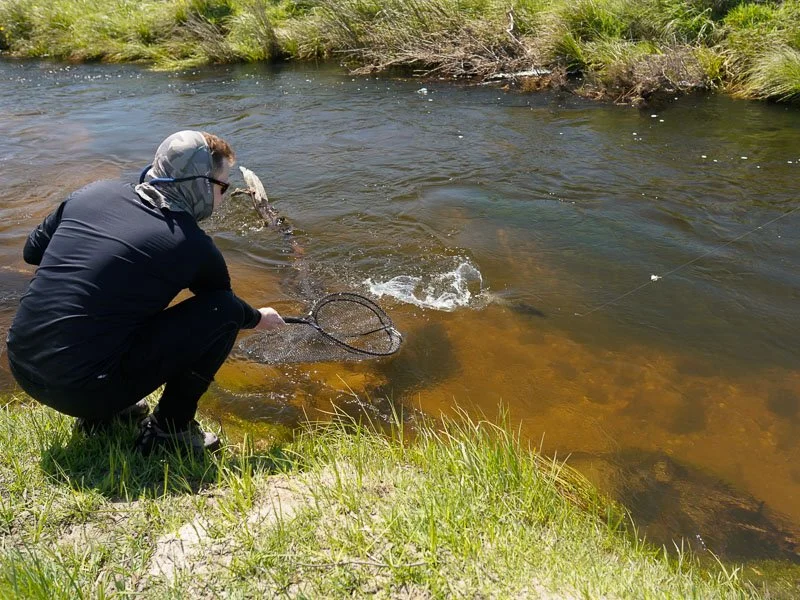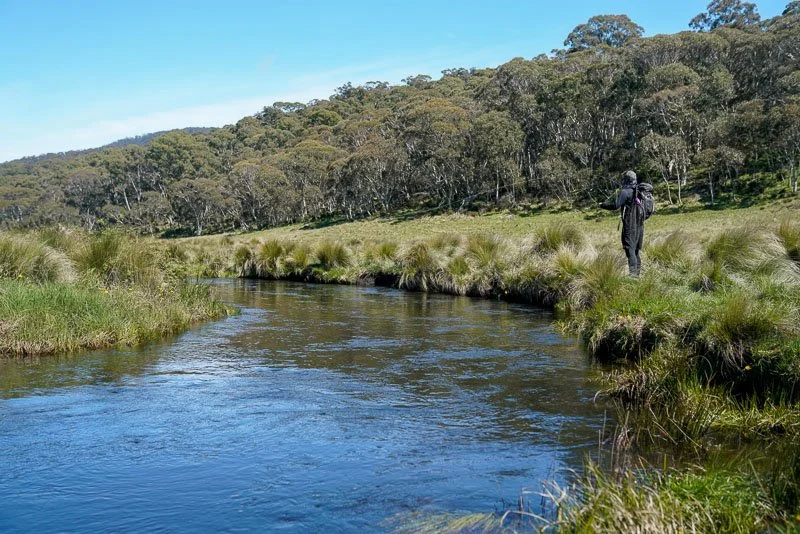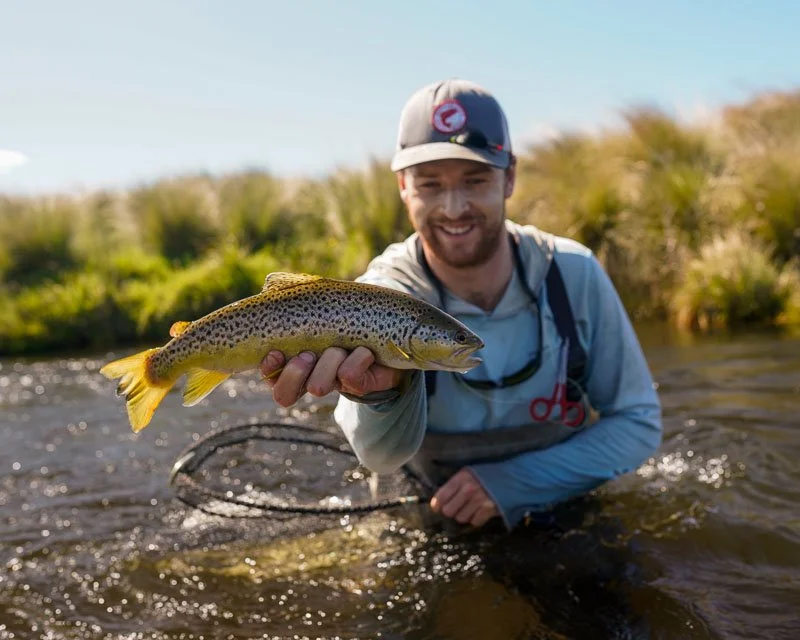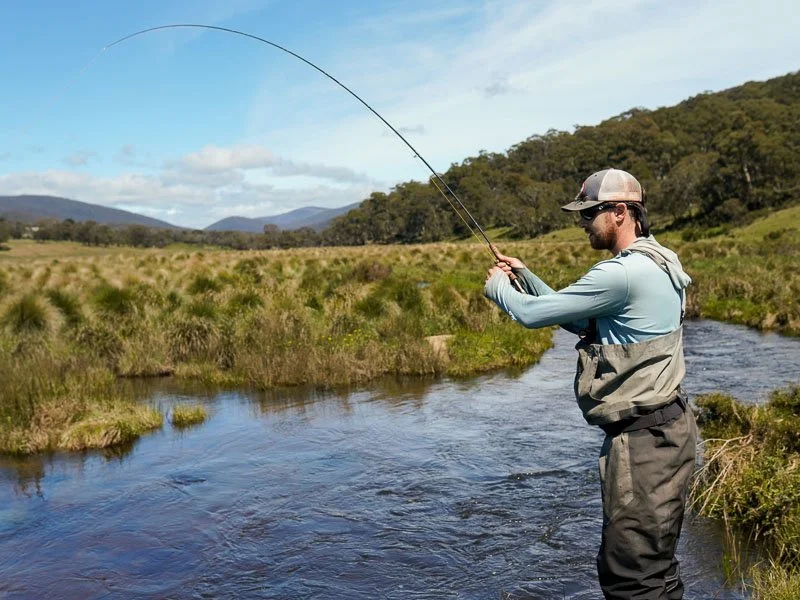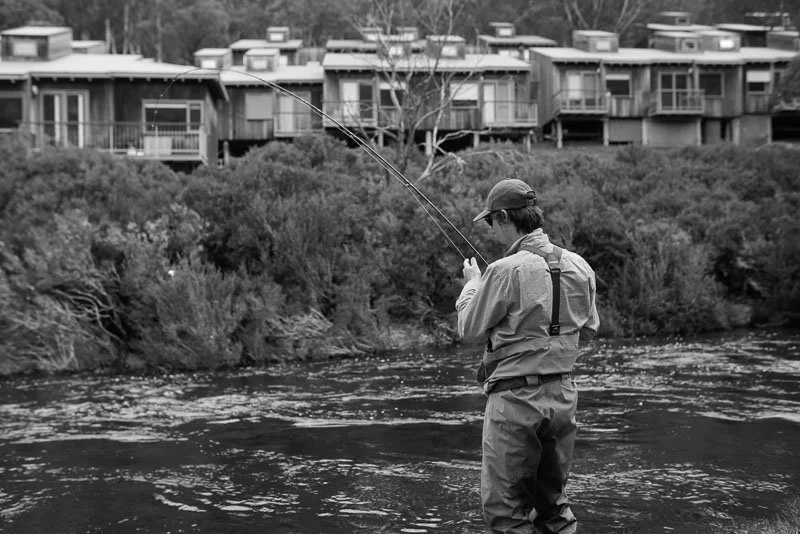Because we should
Only got 5 minutes? Read the minnow version of Because we should here
We really did need a quiet weekend. We had filled the previous few, fishing, camping, and mountain biking around the ACT and southern NSW, with even a brief foray into northern Victoria. Our intent always on making use of the lifestyle that had drawn us back to the nation’s Capital by using all free time satiating the call of the outdoors. After a couple of Covid-interrupted years, the first hint of extended day light and increasing temperature saw us treat the precious time between Friday evening and Monday morning as our most valuable asset - a perspective that is easy to lose at times.
Regardless, the time for repairing leaders, retying lost nymphs, drying gear, and servicing mountain bikes had arrived. Not to mention the need for some rest and re-organisation ahead of a busy period at work for the both of us. Our quiet weekend was planned.
Sometimes the best intentions clash with opportunity, and even the most responsible of plans can be undermined. Such was the case when a voice message landed with me late on Saturday morning from two fishing buddies. They had spent the early morning exploring new water, one of the multitude of little streams that saunters off the high country before joining a larger, well known (and more pressured) river.
The possibilities in this part of the world seem endless. A series of major waterways drain the rooftop of Australia in predominantly southerly (Snowy), northerly (Murrumbidgee) and westerly (Murray) directions. The big rivers are, of course, supplied by tributaries, ranging from the tumbling and tiny (Perisher, Three Mile, and Jounama Creeks), through to the moderate and meandering (Eucumbene, Gungarlin, and upper ‘Bidgee rivers). There are hundreds of them, and they probably all hold fish of varying numbers and condition. Despite this endless offering, exploration of new water is always a mystery. We’ve had days on un-heard-of water, explored just on a guess, yield bunches of fish. These are of course offset by the lesser discussed donut days, often on fabled streams (several aforementioned). Perhaps this relationship demonstrates causality rather than coincidence.






All that is to say that when the recorded voice message arrived, I was more than curious as to which way their day had gone. “Great morning down here mate. It’s a bit murky still from the rain, but they were chewing their heads off down deep. The wind got up a bit so we’re off to explore another creek now, but will definitely go back tomorrow.. Can you get to the pub in town by 7?”
Nup. Can’t. They were probably winding me up anyway. There’s housework to do, and Sam has already told me she needs to tackle some work on Sunday. Also, washing and vacuuming, and a Sunday sleep in. Could be worse. It’s just not to be this weekend.
Regardless, worth listening to the message again; in case I missed something.
“Her parting words of encouragement raised the stakes: “Make this worth it – you’d better find some fish”. ”
The vanquished interest reignited when I checked the forecast, which of course looked perfect for the next day. Not even perfect in the context of trying to convince myself to go, actually spot on. Maybe it could work?
The critical chores need to be done quickly, and Sam needs to be able to work remotely tomorrow. So the case was made, the decision followed, and the necessary tasks were tackled at lightspeed. In a matter of hours we had accommodation, car packed, bikes loaded and we were on the road. At the pub by 7 pm. What a turn-around!
Sunday dawned bright and clear. As Sam settled in with laptop and good humour, we made plans to reconvene at lunchtime and go for a ride. Her parting words of encouragement raised the stakes: “Make this worth it – you’d better find some fish”.
She made a good point, as my enthusiasm to take the plunge and head down the highway on Saturday had not left much room for questioning whether the fishing would be any good on Sunday. I was relying on the brief recorded testimony of my fishing mates, both known for an abundance of enthusiasm and hyperbole, tempered by little integrity and objectivity. They are, in fact, pretty daft. I realised I had been exposed, by my own enthusiasm and the baiting of some friends, to the risk of a disappointing day and a grand waste of time for us both.
We followed a track up an open-floored valley, tussocks and the occasional patch of trees indicating the line of the river. When we arrived I was promptly told it was both lower and clearer than the day before, after a third consecutive day of no rain (a rarity in the Spring of 2022). Suddenly cynical, I muttered ‘I’ll take your word for it’. It didn’t look especially clear or low to me, and the boggy trudge across the flats we had just endured suggested to me that there was still plenty of the damp stuff around. I had rapidly become certain that this was to be the mother of all stitch ups.
“ Such was the magnitude of H1’s indictor that 2 pounds of brown trout struggled to submerge it. On one occasion I thought a merino lamb had strayed into the high water as the oversized dry fly drifted back past me. ”
Besides the colour of the water, the river looked superb. A meandering, tussock lined stream, carving its way across a broad floodplain. Depth and flow seemed to vary across the first few bends we explored. There was a good variety of water on offer. As we often do when fishing together, the three of us set up differing rigs to cover the range of water presented as a trio. The Henrys (an appropriate name for the duo) had vastly differing approaches. H1 had a large indicator, a metre or so above a heavily weighted worm impression, and a smaller pheasant tail nymph on the point. H2 had no time, and too much pride, for such a system, and preferred a single dry, a stimulator, with which he could pick apart shallower runs and back waters. I had a classic dry-dropper, a large foamy fly on top and the typical 40cm dropper to a 3mm gold headed nymph, something bright enough to cut through the foggy water, but not as shameless as the wriggly and rubbery alternative.
Within the first half hour H1 and I both had a reasonable brown to the net, both of which had taken our weighted offerings. Such was the magnitude of H1’s indictor that 2 pounds of brown trout struggled to submerge it. On one occasion I thought a merino lamb had strayed into the high water as the oversized dry fly drifted back past me. No shame for the victor. The early results were enough to convince H2 of the need for a sub-surface element, though he still wasn’t prepared to try anything long, skinny, and pink. Rather a dropper similar to mine with a natural size 14 impression. He was shortly rewarded with a brown of similar condition to the first two.
As we followed the waterway’s many twists and turns upstream, we found the fish were not as abundant as on other highland rivers (though their presence in any form was welcomed). They were, however, in exceptional condition, and a deal larger than the regular taking from similar streams in the area. Wandering uphill it became almost routine to catch browns of a pound in each spot where you’d expect them to be. The prime water in every run was owned by a good fish, and whilst there may well have been others sitting in the inferior spots, we didn’t successfully disturb them. The odd rainbow delivered a break to this rhythm, though these were in atypically steady water. These seemed more variable in maturity and condition, and were both the largest and smallest fish of the day.
Navigating the water, shrubs, and occasional trans-river fence line, we found the stream was clearing and dropping before our eyes: a known advantage of fishing near the top of a catchment. We even managed to spook a couple of good fish in shallow water, despite a careful approach. Leaders were lengthened, out came the dainty 5x tippet, and H1 removed his indicator (presumably off to be skirted, scoured, and spun) and replaced it with a dry of similar girth. As our good fortune continued, I realised that between pastoral activities and the work of National Parks and Wildlife, helicopters are a common sight in this part of the world. Perhaps these have an emboldening effect on the trout when such an enormous fly is presented.
Upstream, the fish we were seeing and catching were becoming larger. Rather than the abundance of one-pound fish a bit further down, we were challenged by fewer, but larger fish, and from what we could see, exclusively brown trout. This was exemplified by the fish of the day, a two and half pounder plucked from a likely run by H1. The wonderful condition on all the fish meant we had our work cut out whenever one was hooked. Having lost a couple to undercut banks and poor knot tying, a cautious approach and the fine tippet required a good few minutes spent in combat before this one was netted.
“It demonstrated that we were not the first to fall victim to poor knot tying on this stream, and that H1 was not the first to cast black-hawk proportioned flies on it. ”
We realised midday was fast approaching, and as such, our time was limited. A final run was identified, and H1 and H2 were kind enough to offer it to me, given the commitment shown the day before. A pebbly bottom and roughly a metre and a half of tea coloured water made spotting any low-sitting fish difficult, even in high sun. Nonetheless, I was pleasantly surprised when a lovely fish took my nymph at the bottom of the run, nearly level with where I stood. Old mate brown was clearly the landlord of that particular piece of water, or at least on the Strata Committee, it charged up and down the run a couple of times, and made several efforts towards an overhanging tree that looked to be highly familiar territory. Thankfully it did the sporting thing and stayed out of the overgrown riffle immediately downstream and in the more placid water above me, and was eventually subdued and netted from where the cast was made.
Before turning around H2 spied a large dark grass hopper impression snagged in a tree hanging over the same run. We easily waded up and plucked the size 8 hook from its entanglement, which must have been lodged there in a time of higher water. It demonstrated that we were not the first to fall victim to poor knot tying on this stream, and that H1 was not the first to cast black-hawk proportioned flies on it.
Late for our commitment, we hotfooted back to the car, discarding all of the stealth and caution that had been practiced on the way up (though adequate care was taken ducking under an electric fence which had enlivened the morning and the heart rate of H1 a couple of hours earlier). We headed back to town and met up with Sam for a quick bite. It’s funny how you’re never hungry until the good fishing has stopped. We all piled into the car to head out for an afternoon of riding and more relaxed fishing, and enjoyed the sweeping bends of Alpine Way en route. Everything was a bonus in the after glow of a successful morning.
No more fish were found and the ride was shortened by heavy trails, deteriorating weather, and an inquisitive tiger snake. Even so, the gentle green trails in the Thredbo Valley made the trip worth it for Sam, and reminded us both that not all activities in the mountains need to involve being knee deep in snow melt. We would be sure to return to explore the valley trails more thoroughly.



An outstanding day which far outweighed the alternative. We risked returning to work slightly weary, but at least refreshed and up-beat from another day doing what our fortunate lifestyle, and location, enables. It isn’t an obligation to hit the road every weekend over summer (and sooner or later the chores and need for a quiet one do catch up). But knowing that many go through life without an opportunity to explore the hills and its streams, it wouldn’t be right to pass up on too many of them.
The day concluded standing next to the car at the deserted Ski-Tube carpark, practise casting a bespoke 3 weight split rod, loaned by the old man. The tweed jacket and hip flask it is best paired with did not feature, but we had planned to use the rod earlier in the day. We realised that in the excitement of the morning we had forgotten to get it out, though in retrospect it might not have been the ideal tool for the foam and tungsten pairings we had exercised. So we stood next to the car, mountain bikes affixed, casting across the parking bays, not so much because we could, but because we should.




